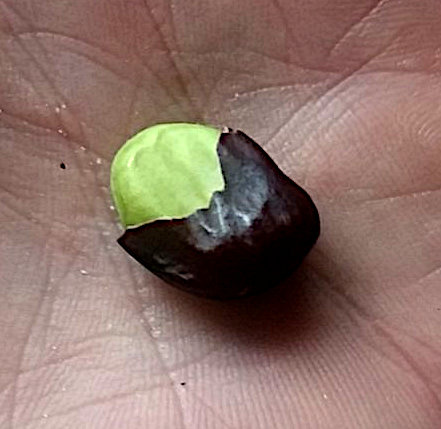




Answered at: Disorderly Landrace Plantings





 2
2





 10
10





 7
7







 3
3








Shenanigans of the sheep and wooly sort.. And many more.. https://www.instagram.com/girlwalkswithgoats/
Papa always says, "Don't go away angry... just go away."

 3
3





 5
5





 10
10





 1
1





 18
18





 10
10








Joseph Lofthouse wrote:Yesterday, I cleaned and winnowed seeds: Beans, corn, and sunflower. Next step is to cycle them through the freezer to kill insects. Germination testing after that.
Shenanigans of the sheep and wooly sort.. And many more.. https://www.instagram.com/girlwalkswithgoats/
Papa always says, "Don't go away angry... just go away."

 4
4




kadence blevins wrote:Do you leave them in the freezer for a certain length of time? Luckily I haven't had seeds get bug-y but would be very good to know :)

 5
5




Christi Wilhelmi wrote:
This week on the Gardenerd Tip of the Week Podcast, we journey down an unconventional rabbit hole with Joseph Lofthouse. He spends his days developing landrace seeds on his 6th-generation family farm in northern Utah.
He’s also the author of Landrace Gardening: Food Security through Biodiversity and Promiscuous Pollination. What’s a landrace you ask? Listen to find out. He opens our minds to resilient possibilities.

 8
8





 7
7






 8
8





 11
11





 4
4





 7
7





 10
10





 13
13




 1
1




Joseph Lofthouse wrote:
Julia: Dahlia tubers are bland and crispy. The closest approximation I can think of would be water chestnuts. They take on the flavor of whatever food they are cooked with. We typically add them in moderation to soups, stir-fries, or roasts. They stay crunchy when cooked, so I don't like them sautéed by themselves, or as hash-browns. They don't mash well. They burn when deep-fried, so I don't like them as chips. I think that they might make an excellent fermented vegetable if grated. This year I want to try some as pickles.
And, since we are on the topic of dahlias, this is one of the more productive clones, and one of my favorite colored.
Education: "the ardent search for truth and its unselfish transmission to youth and to all those learning to think rigorously, so as to act rightly and to serve humanity better." - John Paul II

 1
1








Joseph Lofthouse wrote:
Some dahlia tubers are more edible than others. Texture is similar to water-chestnut. Some of them can be resinous (like sunflower). Yield was up to 6 pounds per plant.
Education: "the ardent search for truth and its unselfish transmission to youth and to all those learning to think rigorously, so as to act rightly and to serve humanity better." - John Paul II

 3
3





 6
6







 5
5





 4
4





 1
1





 7
7





 1
1





 1
1









 1
1





 1
1






|
Is that a banana in your pocket? I'm just asking for this tiny ad:
The new kickstarter is now live!
https://www.kickstarter.com/projects/paulwheaton/garden-cards
|








